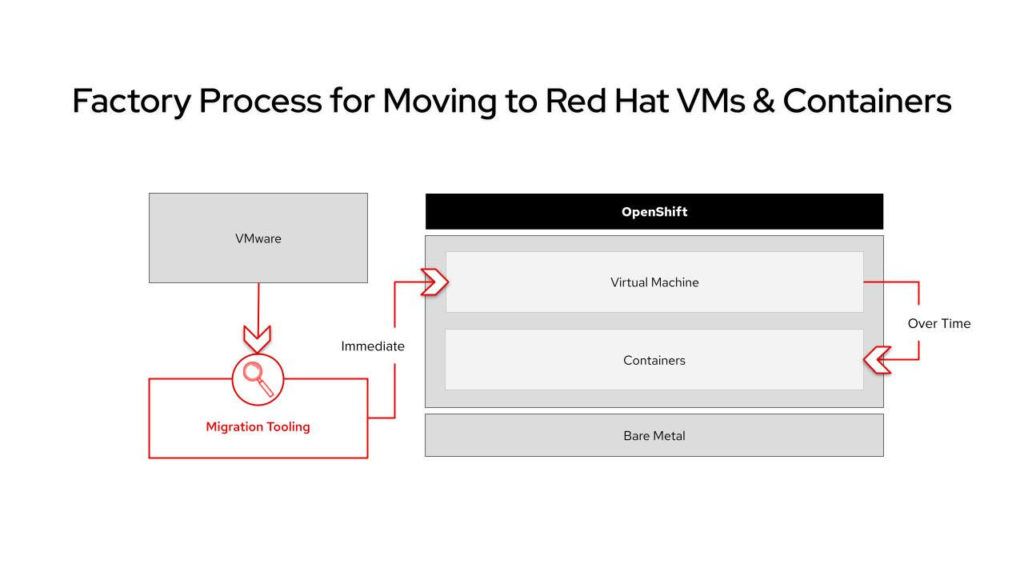During an online Red Hat Summit event, Red Hat announced today that a kit for migrating existing virtual machines to a Red Hat OpenShift platform based on Kubernetes is now generally available.
James Labocki, senior director of product management for Red Hat, says the migration toolkit makes it simpler to migrate virtual machines from VMware to a Red Hat OpenShift platform that uses an OpenShift Virtualization offering to encapsulate virtual machines in a container.
The migration kit is based on open source software that Red Hat recently contributed to a Konveyor program, set up in collaboration with IBM, for fostering the development of cloud-native tools. Red Hat OpenShift Virtualization, meanwhile, is based on an instance of open source Kubevirt software created to make it simpler to migrate legacy monolithic applications running on virtual machines to Kubernetes clusters running on a bare metal server.
The Red Hat migration toolkit automates the migration process once source and destination credentials are provided. It then maps the source and destination infrastructure to create and execute the migration using analytics capabilities that surface any potential migration issues before the migration begins. Those analytics tools will also provide recommendations for resolving those issues. Virtual machines can also be filtered by name, folder or other parameters to review all instances of virtual machines that are attached to a specific application.
OpenShift Virtualization enables IT teams to run both monolithic and microservices-based applications on the same platform without requiring cloud-native applications based on containers to be deployed on a virtual machine they don’t require. In addition to reducing the overall overhead required to run container applications, that capability also reduces the need for some organizations to license commercial virtual machine software.
Labocki says the primary reason organizations will make use of this and other migration tools Red Hat provides is to increase the rate at which developers build applications. The virtual machine migration tool automates, at scale, a process that would otherwise require days to accomplish, he notes. Other Red Hat migration solutions include tools for migrating encapsulated stateful and stateless applications from a source cluster to a target cluster, along with tools for migrating applications deployed on the JBoss application server to Kubernetes.
It’s not clear to what degree IT organizations are migrating legacy applications to Kubernetes clusters. The bulk of enterprise IT organizations are opting to deploy greenfield applications on Kubernetes clusters, but they may not have reached a critical mass of deployments that would justify migrating applications to Kubernetes clusters just yet. However, more enterprise IT teams are slowly but surely finding themselves managing fleets of Kubernetes clusters alongside legacy platforms.
The need to eventually reduce the total cost of IT through consolidation is, of course, ever present. The challenge is finding the most efficient way to manage legacy applications that will, in many cases, eventually be retired alongside emerging modern microservices-based applications that continue to arrive at an ever-increasing rate.




